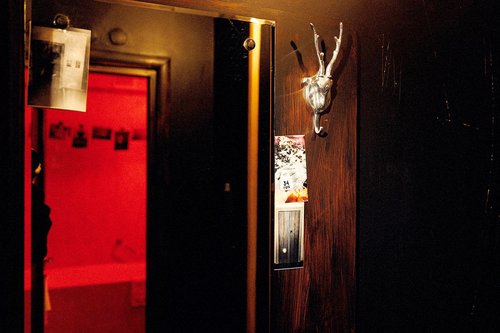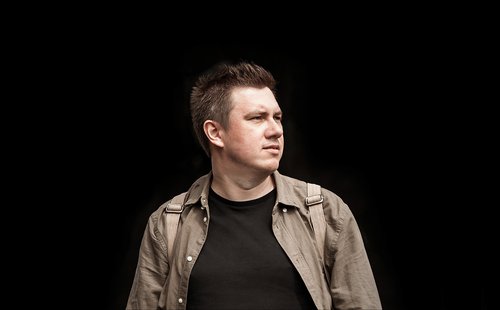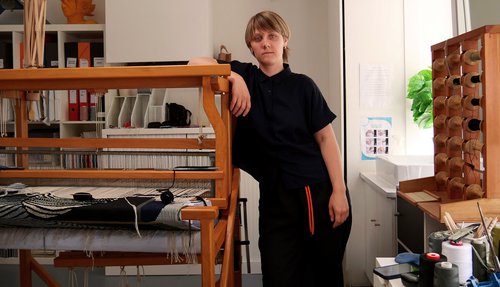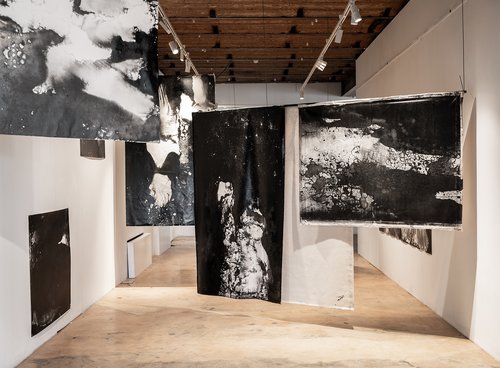Yegor Koshelev. Gestalt, 2009. Courtesy of Vladey
Russian Artists and the Allure of Ruins
How have artists over the centuries addressed the ever-relevant topics of destruction, disintegration and disappearance? Sergey Khachaturov, Russian art critic and regular contributor to ‘Art Focus Now’ attempts to find some answers. ‘Apology of Wreckage. The Theme of Ruins in European Culture, from Antiquity to Metamodernism’, has recently come out in print in the Russian language by Moscow publisher NLO. Here is an excerpt from the book translated into English about contemporary Russian artists, introduced by a short passage from the preface.
The word ‘ruin’ derives from the Latin verb ‘ruere’ – to fall. Moving away from the purely archaeological interpretation of the concept as the remains of a destroyed building, I propose a much broader metaphorical spectrum of meanings. If one bears in mind the verb ‘to fall’, then by ruins we shall understand the crushed state of the artistic image as such. Ruin in the broad sense of interpretation: that which has been destroyed, that which has not been fully embodied, that which has not achieved wholeness and harmony, has remained a fragment and shard, has not integrated into a system and completed project. This rich path of understanding ruins in European culture, with its nuances and turns of meaning, is what the reader of this book is invited to traverse.
Excerpt from Chapter 17: “The Gorgon's Gaze. The Artist as Ruin”
Postmodernism arose from the assumption that all humanitarian knowledge, ideas of progress, and phantoms of a bright future had become devalued, lost meaning, and exhausted themselves. The world represents a gigantic ruin, but it consists of quotations, pastiches, devalued speeches and meanings. Sorting through individual parts of this massive ruin, we can play with a toy construction set. This game is like playing with glass beads or blowing soap bubbles. Only cynicism and irony prove to be its driving force. Metamodernism of the late 2010s confirmed that the world is a ruin. It will never be open to exhaustive knowledge or any kind of coherent logic. However, as the theorists of metamodernism Robin van den Akker and Timotheus Vermeulen acknowledged, ruination does not mean the absence of meaning. Meaning simply distances itself from us, like object-oriented art. Postmodernist irony also proved to be in demand. However, its value content changed from minus to plus. Largely thanks to irony, which helps us remember our imperfections and the perfection of the universe, we move towards hidden ideas and meanings. In some ways we are heirs to the Romantics of the 19th century who revered ruins and irony.
The metaphor that helps understand the path of movement from silent fragments to the value of each concrete experience of them is the swing. In metamodernist aesthetics, swings help us to be “between”, and not to coincide with any dogma or cliché. In movement and overcoming, it is important to approach the core of value concepts and ideas. Swings provide the possibility of reassembling the parts of a ruin so that we are delighted by an unexpected harmony that does not fit within our experience.
I could list many Russian artists who turn to the theme of swings in the ruined understanding of former styles of what was high art but instead I shall offer portraits of three artists whom I know best. My first hero, who collects fragments of former great ideas and styles is Yegor Koshelev (b. 1980). In his paintings and works on paper Koshelev resurrects the very idea of the maniera grande. The Mannerists of the 16th century in their plastic wanderings broke the codes of Renaissance language in order to find a correspondence between the great “manner” and what was a changed worldview. Yegor Koshelev breaks the templates and stencils of Soviet past art, which became the basis of all teaching programmes in art academies across the whole territory of the former USSR. He finds equally alien both the insipid left-wing Moscow Union of Artists and the comfortable appropriation of bad painting by post-Soviet postmodernists. Following the ancient Mannerists, he wishes to test the extreme states of various representational systems, in his own words, “to take the sublimation of language to extremes”. Therefore, after graduating from the Stroganov Academy in the noughties, he attempted to cast off everything he had been taught there and retreat into the radically unprofessional urban art of graffiti artists. “It was important,” says Koshelev, “to reach the very bottom, scribbling on walls and facades. After all, no one notices that in Raphael’s (1483–1520) Stanze, all the walls below are covered with graffiti left by visitors to the Stanze in different epochs.” Such an odyssey from the spontaneous noise of life to the divine grazia of Raphaelesque compositions gives contemporary dramatic, tragic acuity to the understanding of art as a process with many components, immersed in the thickness of existence rather than in the glass showcase of a museum.
In his current work, Koshelev makes the reverse movement: he attempts to see graffiti artists, the representatives of youth subcultures as heroes of Renaissance and Mannerist frescoes. The mind-boggling complexity of compositions and the calligraphic finesse of drawing inherited from the Mannerists perplex viewers. They experience a strange discomfort from a certain dislocation of perception of what otherwise seems familiar. The Neoclassical manner is implanted in the acidic world of subcultures; Soviet monumental style is distorted by Baroque excesses. These excesses do not cancel adherence to maniera grande as a perfectionism of self-sufficient artistic expression alien to postmodernist pastiche and topical journalism. Thanks to the quality of presentation, one believes in Koshelev's worlds, which in some ways are heirs to the worlds of the legendary autodidact-visionary, father of world subcultures William Blake (1757–1827); they captivate. They force confused viewers to undertake their own odyssey in search of IDEA.
An artist who creates gigantic total ruined installations is Ira Korina (b. 1976). Her work is comparable in scale of expression and social diagnosis to the art of the renowned Swiss artist Thomas Hirschhorn (b. 1957). Both find, fence off, and install the strangest, most frightening, diseased zones of humanity’s life at different stages of history. Hirschhorn creates a space for public involvement and interaction with a world resembling that which floats in the slow-motion explosion from Michelangelo Antonioni’s (1912–2007) film ‘Zabriskie Point’. This film is a manifesto of the hippie movement.
Ira Korina captures critical zones of self-presentation not of catastrophic but of banal images of everyday life. In these critical zones, she discovers a strange ruined, inside-out logic of meanings, ideas, and values. Bombastic pathos and places killed by official rhetoric are turned inside out, exposing their fake interiors, as if eaten by corrosion, mould, and moths. Thus, recently at VDNKh in Moscow's Transport Museum, the artist created ‘The Horn of Plenty’. The luxurious stucco of the pavilions of the USSR’s totalitarian paradise with horns of plenty and fruits turned into a gigantic inflation: cyclopic-sized inflatable toys with grisaille printed on them. Along with inflatable melons, apples, and pinecones spilling from the horn comes a real object: the pride of the Soviet automotive industry, the first car for the people – the Moskvich.
In 2023, a solo exhibition staged by Korina at XL Gallery was called ‘Melting’. A strange pavilion was built into the vast space of the gallery with its towering ceilings. Like Hirschhorn’s work, this is some kind of hybrid, heterotopic, “other” place. It simultaneously resembles a yurt in snow, an EXPO pavilion, curiosities in the park of a country estate, like an artificial ruin. The pavilion is made of fabric. White. The lower part is dirty grey in colour, like the snow melting in March in Moscow. Simultaneously, these dirty streaks of paint at the bottom of the fabric tent gather into silhouettes of some unknown fantastic landscapes. They are associated with romantic reverie.
There is only one entrance to the tent. The journey inside becomes a wandering through a labyrinth of associations. Viewers are not asked to remove their shoes. That is, the soft fabric floor gradually becomes the same dirty colour as the snow in Moscow and the ‘plinth’ of Korina’s pavilion. Folded corridors lead to beautifully lit rooms. In the rooms stand old, worn, cracked and carved cabints found in flea markets. Such pieces decorate the interiors of flats belonging to families “with a biography”. Ceramic objects are displayed in these cabinets and chests of drawers. They seem recognisable – yet completely different, of a kind of false nature, like an optical illusion. A porcelain figurine with a boy embracing a dog suddenly melts into a sculpture in the style of art brut. Seven elephants on a chest of drawers transform into shapeless loose snowdrifts. Ceramic skis for gnomes stand in the sideboard like little Meissen porcelain vases.
This glitch, error, and delusion plunges one into melancholy. The pavilion with artefacts of personal memory freezes emotion. It is a metaphor for stupefaction. Memory strives to remember what it is like to live a normal life, but a programme error produces some monsters, mutants. We try to remember what it means to live in comfort, in harmony with the world. But we cannot return there even mentally. Everything is dirty snow and February frost... The main difference between Korina’s strategy and Thomas Hirschhorn's total installations/pavilions/altars: those by Korina exclude active participation as a variant of occupational therapy. We are doomed to inaction and stupefaction. Our emotions are frozen.
The work of millennial artist Leonid Tskhe (b. 1983), a graduate of St Petersburg’s Academy of Arts, also demonstrates a desire to return to the archetypes of painterly practice, to feel the flesh of paint substance, the primary foundations of form, the sometimes agonising conjunction of objects and volumes. The simplicity of artistic gesture signals an unwillingness to turn into a statue, to kill one’s talent in the stamps and dogmas of academicism, progressivist templates of modernist ideas, or postmodern cynicism. In a deliberately crude stylistic which is suspended between abstraction and figuration, creatureliness and non-embodiment, the artist devoutly breaks through to his own inalienable subjectivity, the right to a personal voice and gaze.
The aspiration to make everyday life and the banalities of the quotidian allies of ruins testifies to the revival of craft as honest making of things and an honest desire to acquire one’s own non-glossy identity. Therefore, among the entirely new generation of zoomer artists today, there is an obvious attraction to reviving the most marginal, outsider styles, which can be called “ruins of ruins” – art brut, tachisme, informel... In the post-war period, they testified to a radical rejection of everything “project-based”, bombastic, beautiful, and even crafted. They exposed the traumas, wounds, and scars of crushed humanity.
Сергей Хачатуров. Апология обломков. Руинная тема в контесте истории европейской культуры. (Apology of Wreckage. The Theme of Ruins in European Culture, from Antiquity to Metamodernism. By Sergey Khachaturov)
Novoye Literaturnoye Obozrenie (NLO), 2025
Moscow, Russia


















